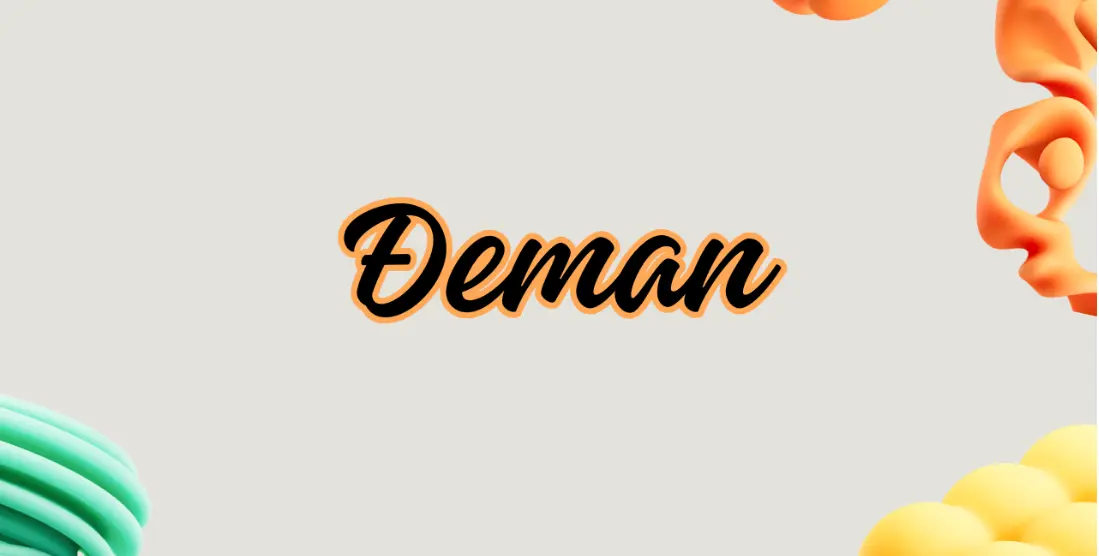Đeman, pronounced “jeh-man,” is a mysterious spirit found in the folklore of the Balkan region. While it may sound like “demon,” this figure is much more than that. It represents fear, mystery, and sometimes even protection. Depending on the story, the Đeman can be a shapeshifter, a trickster, or a shadow with lessons to teach.
Where the Đeman Legend Begins
Stories of Đeman have been passed down for hundreds of years. In Serbia, Bosnia, Albania, and nearby countries, people shared these tales by word of mouth. Often, the Đeman appears to test people’s honesty or bravery. Sometimes it scares them—other times, it guides them. These stories helped teach morals, explain bad luck, and entertain around village fires.
The Language Behind the Name Đeman
The word “Đeman” might remind people of “demon,” but it has different roots. In some languages, it comes from old Slavic words mixed with Ottoman influence. The special letter “đ” gives it a local flavor. Depending on where you hear the story, it might mean something evil—or simply something strange and wild.
Not Your Typical Demon
In Western culture, demons are often linked with hell and pure evil. Đeman, however, isn’t always bad. Some tales say it was once a human soul, cursed or lost. Others call it a nature spirit. This makes the Đeman a deeper character, full of mystery and emotion. It can scare, protect, or even teach a valuable lesson.
Traits That Define the Đeman
Here’s what many stories say about the Đeman:
-
It can change shape, becoming an animal or even someone you trust.
-
It loves to trick people or lead them off their path.
-
It may steal souls or cause strange illnesses.
-
But sometimes, it only appears to test morals or punish wrongdoers.
Village Beliefs and Strange Events
In small villages across the Balkans, people still whisper about Đeman encounters. When crops fail, lights flicker, or dogs bark at nothing—some blame a Đeman. These stories often come from deep forests, lonely roads, or old ruins. For many, they are still very real.
Protecting Yourself from a Đeman
Over the years, people developed ways to keep Đemans away. Some used garlic, salt, or holy water. Others relied on prayers, family heirlooms, or symbols painted on doors. These traditions remain part of local culture, especially in rural homes.
Modern Đeman in Books and Movies
Writers, filmmakers, and game designers now use Đeman as a source of inspiration. It’s perfect for horror stories, fantasy adventures, and tales of the unknown. This shows how the myth is not fading—it’s evolving.
A Psychological View of the Đeman
From a modern angle, some experts believe Đeman stories help people cope with fear. Things like sleep paralysis, bad dreams, or strange sounds at night can feel less scary when blamed on a spirit. In this way, the Đeman becomes a tool to explain the unexplainable.
Đeman as a Personal Metaphor
People today also use “Đeman” as a symbol for inner battles. Someone struggling with addiction, fear, or trauma might say they are “facing their Đeman.” This shows how the spirit now represents personal challenges as well as old legends.
Religious Ideas About the Đeman
Some faiths explain Đeman in spiritual ways. In Islam, it’s compared to a jinn. In Christianity, it may be seen as a lost or troubled soul. In both cases, spiritual prayers and rituals are used to clear away the spirit’s influence.
What Science Says
Science doesn’t see Đeman as real, but it does explain how the stories started. Natural causes—like wind, animals, or illness—can feel scary when people don’t have answers. The human brain loves stories, and Đeman fits well into this need for meaning.
Đeman in Children’s Stories
Even children hear about Đeman—but those stories are softer. The spirit might be shown as a clumsy creature who teaches kids not to lie or stay out too late. This keeps the legend alive in a gentle, helpful way.
Regional Differences in the Đeman Myth
Every Balkan country has its own version of this spirit. In Albania, it might be called a “xhind.” In Romania, it might be more like a ghost. The spirit may change shape or name, but the message is the same: beware the unseen.
Why the Legend Still Matters
The Đeman stays alive because it connects with real human feelings. Fear of the dark, fear of guilt, and fear of failure are all part of the stories. When people hear about the Đeman, they understand the feeling—even if they don’t believe in the spirit itself.
Conclusion
The Đeman is more than a character in a story. It reflects our emotions, culture, and history. From ancient myths to modern books, the Đeman continues to change while staying powerful. Whether seen as a ghost, a warning, or a part of ourselves, this spirit still speaks to the human heart.
FAQs
Is Đeman a demon?
Not always. It can be good or bad depending on the story and region.
Where is Đeman found in stories?
Mostly in the Balkans—especially Serbia, Bosnia, and Albania.
Can Đeman help people?
Some tales say yes. It may protect the honest or punish the wicked.
How do people avoid Đeman?
Using old rituals, prayers, and symbols to keep the spirit away.
Why do people still talk about Đeman?
Because the stories connect with fear, mystery, and life lessons we all face.
